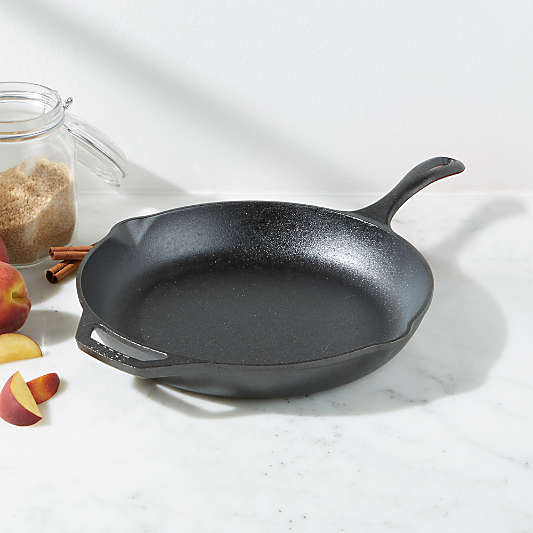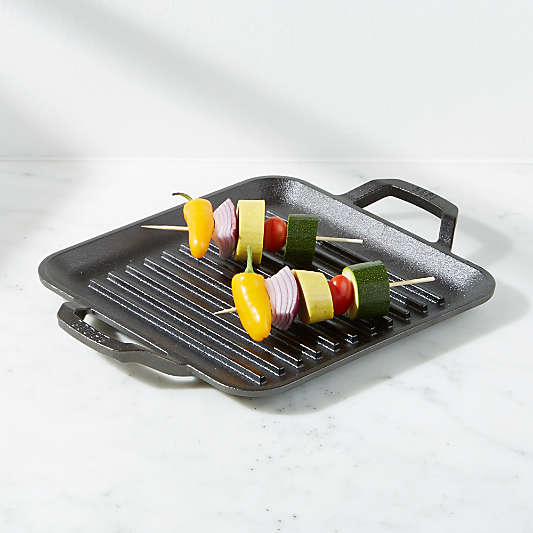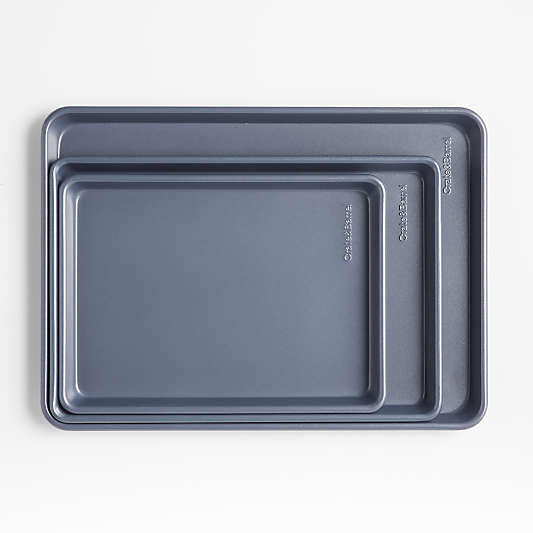Pizza Pans
Types of Pizza Pans
The ingredients are simple—dough, tomato sauce, cheese and herbs—but the combination of the four results in one of the most beloved dishes in the world. How can you replicate that fire-roasted, restaurant-quality pizza at home? It all starts with the dough—the foundation upon which your flavors are built. Your dough texture and taste will vary based on the vessel in which it cooks. Learn more about each type and figure out what you need to bake your dream pie.
Stones, made from either oven-fired clay or hardened ceramic, can be used on the grill or stovetop, as well as in the oven and freezer. The stone is meant to mimic the bake provided by a brick-lined pizza oven and remains stable under high temperatures. While the ceramic is porous enough on its own for proper air flow under the dough, some clay models come with a ribbed surface. The ridges lift the dough up off the surface, ensuring proper air and heat flow and allowing for easy removal from the stone. Clay also is unsurpassed in heat retention, meaning it can be used as serveware to keep the pizza warm throughout the meal. Ceramic is not naturally nonstick, but can be seasoned at home. Apply a thin layer of vegetable oil when before use and after repeated heating, the oil will create a coating. To maintain that coating, simply wash with hot water and a grill brush. More aggressive cleaning will remove the seasoning, and you will have to redo it. The clay can be washed either by hand or in the dishwasher.
Crispers are flat, perforated pans that can be used on the grill, on the stovetop or in the oven. While not as durable in heat as pizza stones, the perforation creates a natural nonstick surface for dough, and allows ample air flow, which allows for even cooking and creates a crispy crust. While a crisper won't keep the pie warm as long as a stone, it's just as versatile and can be used to heat up classic pizza side dishes such as garlic bread, breadsticks, crostini and fresh salad croutons.
Pans are the ideal vehicle for baking a signature Chicago recipe—deep dish. Characterized not only by its upside-down ingredients but also by thick, deep crust, the aluminum walls of the pan brown the outside of the crust and keep the inside soft and pillowy. Just before removing from the oven, switch on the broiler for a minute or two to brown the top layer of sauce and parmesan.
Peels are a must-have for homemade crusts. Easily transfer the fragile dough from the countertop to the oven and occasionally poke and turn while cooking for an even bake and perfectly golden brown product. Consider looking for a peel that fits your kitchen style. If you prefer a rustic look, choose a style in light, grainy acacia. For a more industrial, restaurant feel, look to metal peels. Regardless of material, they should always be generously dusted with flour before transferring any dough. Use as serveware to bring an authentic pizza kitchen feel right to your dining room table.
















































